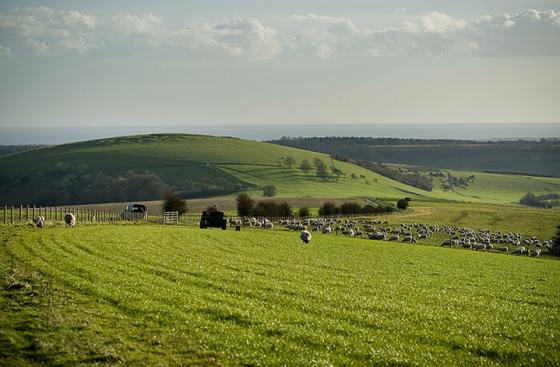
Image Credit: Environment Agency copyright and/or database right 2015.

Image Credit: Environment Agency copyright and/or database right 2015.

Western flank.....


The inner bank is still pretty substantial.... the eastern flank of this neat, little hillfort..

Highlighting the additional, outer rampart protecting the southern approach.

The northern flank... the steep rise requiring just the one rampart, or so it would seem.

The impressive southern flank... showing the bi-vallate defences.


Approaching from the south.... the trees mark the site.....


Panoramic of Highdown hill

Inside the ramparts of Highdown Hill. Many of the trees which were planted here in the 19th Century were blown down by the hurricane of 1987 and uprooted Saxon graves.

Approaching the top of Highdown Hill looking west towards Angmering

18/1/03
more a test of l’espion than anything else........bank & silted ditch
Visited on New Years Day – first time, and only five miles from home!
There’s no signage from the main road to the site, but the gardens and restaurant are marked. There’s a useful car park with essential facilities.
Astounding views even on a murky day across to Chanctonbury, Cissbury to the East and towards the Trundle in the West. Very popular with families, dog walkers, joggers today, but still managed to be peaceful somehow.
Will go back with proper camera and make more notes next weekend. This is first post and pic so please be gentle with me, I do aim to contribute something worthwhile...
In Jacqueline Simpson’s “Sussex Local Legends”
(Folklore, Vol. 84, 1973) she mentions in a footnote on p207 that:
“I have come upon a cutting from the Worthing Gazette of 16 Oct, 1935 referring to Aaron’s Calf being buried on Highdown Hill – yet another site with a hill-fort.”
The Aaron’s Calf story is better known from The Trundle.
Highdown Hill is a small hill 226 feet high that stands just north of Ferring on the West Sussex coast and is seperated from the main bulk of the South Downs to the north.
It has had much use in Prehistoric times with a settlement in the Bronze age, fortification in the Iron age, a Roman bath house and a Saxon cemetary, allegedly the burial place of the Saxon King Ælla after the battle at Mount Badon with King Arthur in 516AD
A wealth of information on this website link.

































